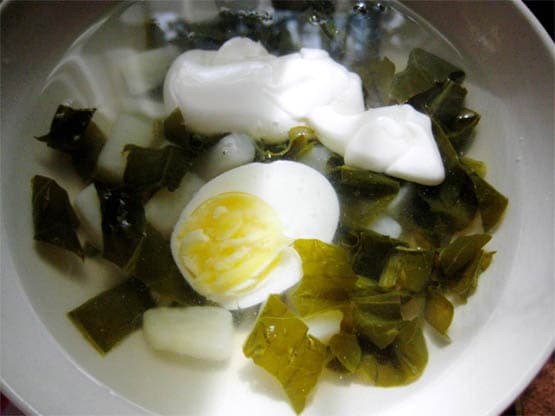Ex Tax: 1.65€
Perennial culture.
Early ripe (40-45 days), high-yielding and cold-resistant variety, resistant to bolting.
The leaf is large, light green, elongated-oval in shape, excellent taste.
Sorrel leaves are a source of many essential vitamins and can be used for fresh consumption and processing.
Agricultural technology.
Sorrel is grown by direct sowing of seeds into the ground. The depth of seed placement is not more than 0.5 cm. Seedlings appear in 12-15 days.
Further care consists in loosening the soil, regular watering and fertilizing with complex mineral fertilizers.
Green mass is harvested at intervals of 15-20 days.

* Sorrel can be sown both in spring and autumn, but in the spring, as a rule, “not up to sorrel”, so we sow it in the fall, but in the spring there is only leaving and waiting for refreshing leaves with surprisingly tasty sourness...
When the hateful snow begins to melt, and the temperature on the thermometer rises to + 3 + 4 degrees, the sorrel begins to grow.
That is why they choose the sunniest bed for him: the one where the snow most quickly turns into life-giving moisture.
Before the start of sorrel growth, when the soil is physically ready, you can loosen it shallowly and cover it with a nutrient layer of mulch.
After a couple of days, you can also carry out the first feeding (for this, a mullein diluted about 5-6 times with water is ideal).
It will also not be redundant if you add potash and phosphorus fertilizers to the resulting mixture (10-15 g per m2 is enough).
Such top dressing can be done several times: two, and preferably three. But, as soon as the sorrel leaves begin to actively grow, then feeding should be stopped, as the taste may deteriorate.
By the way, as soon as the plants begin to gain strength, take a closer look at them: isn't it too crowded for them in the garden?
If they grow densely, then weed ruthlessly, leaving stronger plants with a distance of 5-6 cm between them.
You should not regret the seedlings, because in conditions of thickening you will get weak plants that are not like those that live on a sufficient feeding area for them, since the leaves of such specimens are large and very juicy.
In late April - early May, weeding should be started, since by this time the weeds have already grown and if the soil is moist (after rain or watering), they are pulled out easily and with almost the entire root system - this is the key to more rare weeding in the future.
In general, weeding, combined with loosening of row spacing to a shallow depth, must be carried out every two weeks.
The second loosening must be combined with just the second top dressing, but if you decide to leave the sorrel for another year after cutting, you can loosen the soil and feed the plants after. By the way, the sorrel, which remained from last year, can be grown further.
You should start caring for such a sorrel by removing old foliage and stems, ordinary rakes are perfect for this, the main thing is not to delay this event and carry it out while there are no fresh leaves yet, or they are very small.
After harvesting last year's leaves, it is necessary to start loosening the row spacing, as well as feeding with any complex mineral fertilizer or mullein solution, which will contribute to the active growth of leaves.
You can start harvesting sorrel (both winter and grown in a biennial crop) in early June: the leaves will already stretch a good ten centimeters.
They can be cut with a knife, or plucked with petioles. The main thing is not to damage the plant, so the petioles should be no more than six centimeters long.
* What kind of nutrition does sorrel need?
In spring, sorrel is fed with any nitrogen fertilizer (3 tablespoons per 10 liters of water), using 1 liter of solution per 1 m2 of plantings.
After each cutting, nitrogen fertilization is repeated; you can use an infusion of weeds instead of mineral fertilizer.
At the end of August, fertilize with any potassium fertilizer. Ash is not used, since it neutralizes the soil, and sorrel prefers acidic soils. Phosphorus is not used in fertilizing, since it causes sorrel to bloom. If the soil was well fertilized with organic matter before planting, then mineral fertilizers are not added at all.
Sorrel plantings should not be watered so much as regularly loosened.











